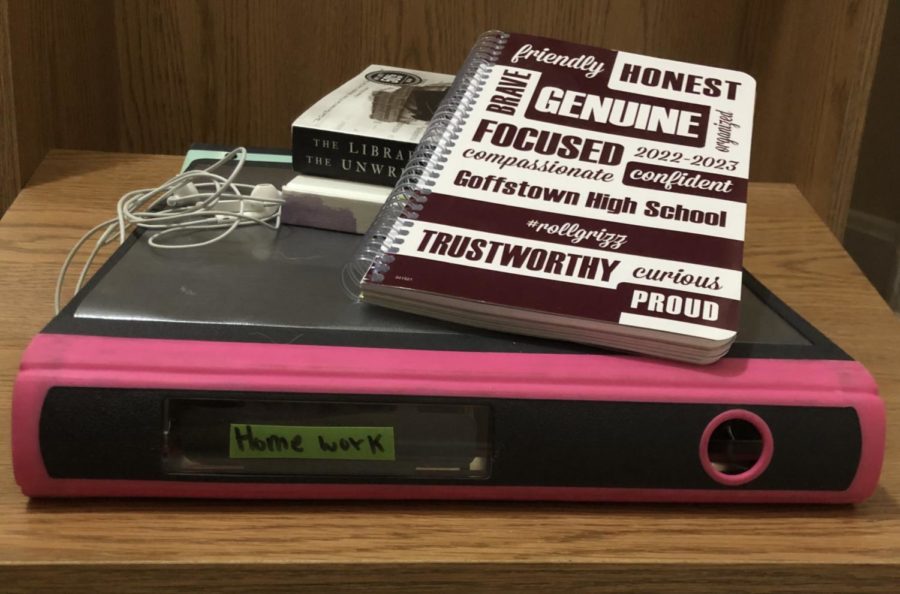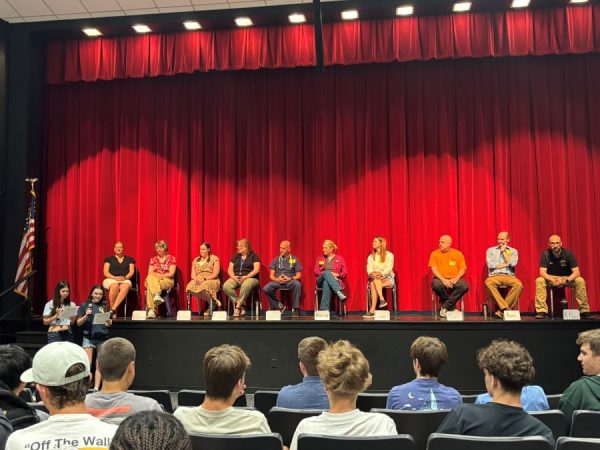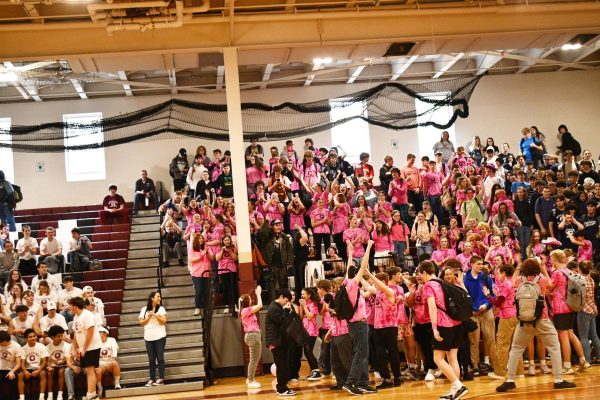Why We Do Silent Reading
Quietly, students shuffle in, greeting the teacher or friends while finding a seat and taking out a book to read for the first thirty minutes of PREP. No phones, no earbuds, nothing electronic, at least for the first thirty minutes; that time is for SSR or Silent, Sustained Reading. SSR is nothing new to the returning students of GHS, but it is a new concept for the freshmen.
The students of Goffstown High School are expected to go to their seats and take out a book when they walk into PREP, as has been tradition. Freshmen aren’t quite as used to this new development, and wonder why it happens in the first place. Reading for thirty minutes straight while in complete silence seems boring at first glance, but there are countless benefits to it.
Assistant Principal Kimberly McCann argues that reading can develop a wider vocabulary and can benefit students in the long run. McCann explains in an interview, “Research consistently shows that reading has a significant correlation with success in school and the workplace. Reading is incredibly important to the work that we do in schools and our goal of assuring that all students have the best opportunity for the greatest success.” McCann continues, “Silent, sustained reading is an important component of skill building and being a successful student. Because of this, we built it into our expectations for all PREPs sometime around 2010. This was a decision that was made by the school administration with the school board and SAU, at that time, based on educational research, analysis of student performance data, and the goal of advancing learning for all students.”
Students have a much different opinion on SSR. As a part of the school administration, McCann can’t fix all the problems because there may truly not be a fix. Like the problems of students trying to leave class, not participating, not being able to focus on the reading, or wanting to get their homework done instead of reading.
Addison Knoetig of the freshman class has encountered many of these problems. She says, “When I first heard about it (SSR) I thought about what would happen if I had a lot of homework, and how it could possibly be an inconvenience.” Despite this, Knoetig addresses benefits to the reading, stating, “I like that it allows for a moment of relaxation during the hard school day.”
Not all students have the same positive or negative reaction to this expectation. Each reaction varies based on the student. Some students would rather do homework or classwork, and some are content with reading a book. The book can be anything too. It doesn’t necessarily have to be school related, though that is always encouraged.
McCann backs this up by saying that, “There are students who really like the time during the day to stop and ‘just’ read. There are students who dislike it.” McCann also states that, “The key to SSR is that the student is engaged in silent reading for a consistent period of time. This can be a new graphic novel they have been waiting for, it could be the next chapter of To Kill a Mockingbird for 10th grade English, or it could be reading their Physics textbook. The act of reading is what is most important to building their skill and building their capacity to be more successful as a student in all of their classes.”
The thirty minutes are up and students either take out their phones and plug in earbuds or they are taking out a homework assignment and a pen. Others may ask to go see a teacher or go to other parts of the school. The last hour of PREP you are encouraged to be productive in the way you see fit.
Students in high level classes may have a struggle to get a decent amount of work done in the hour given. Knoetig expresses these concerns when saying, “I wish it was more of having to work on something school related rather than just having to read.”
Students may have trouble getting focused on reading in the first place. Whether it is due to their peers distracting them, or not being able to listen to music, or being stressed over the limited amount of time to get work done. But it is still the expectation to be reading. Students may feel like the time is dragging on or that they are counting the seconds till they can do what they want but in the end it is still beneficial to them.
Every PREP, Knoetig will try to do the reading assigned from English class but mentions that, “I have so much [homework] even without the reading that it is hard to get focused on the reading. I have to do work the entire time.” Knoetig admits that even though the other students in the class know the expectation they still try to get out of it. When asked if the administrative team had ever seen cases of students trying to get out of the reading, McCann explains that, yes, it does happen but, “ That doesn’t mean, though, that we should allow it as educators. There are too many benefits to students who consistently engage in SSR.”
To get more students involved in SSR, the administrative team and teachers have talked about the option to get work done and then read or give the option to just work the whole period. Students say that the time drags on when the only option is to read and think it would be more beneficial to be able to do their work. Unfortunately, students don’t read outside of school, so the administrators decided to add it into the curriculum so this generation doesn’t forget that reading can be fun.
McCann addresses this issue by saying that, “Over the years, we have absolutely been open to the fact that there are times students need the full 90-minutes for homework. And we have supported teachers in allowing students who feel they need the entire period to “flip the model” and start with their homework. If they work all 90-minutes, great. If they finish early, they can read until the end of the period.” Reading averages have taken a big decrease in the last years and that is why it is still required in the PREP time. “Very few students read outside of school. A study conducted in 2007 by the National Endowment for the Arts found that fewer than 25% of 17-year-olds were reading every day and that individuals between the ages of 15 and 24 were reading, on average, less than 10 minutes per day. And, this was before the prevalence of smartphones, tablets, streaming services, etc. It is very likely that this study conducted today would find that teenagers are reading even less.” McCann says to further the point that reading is beneficial to everyone and should be encouraged to pick up a book when they can.

Sarah is a freshman at GHS. She wants to be a novel editor, more specifically an editor for mystery or thriller novels. She is in the Ethics, Speech, and...








